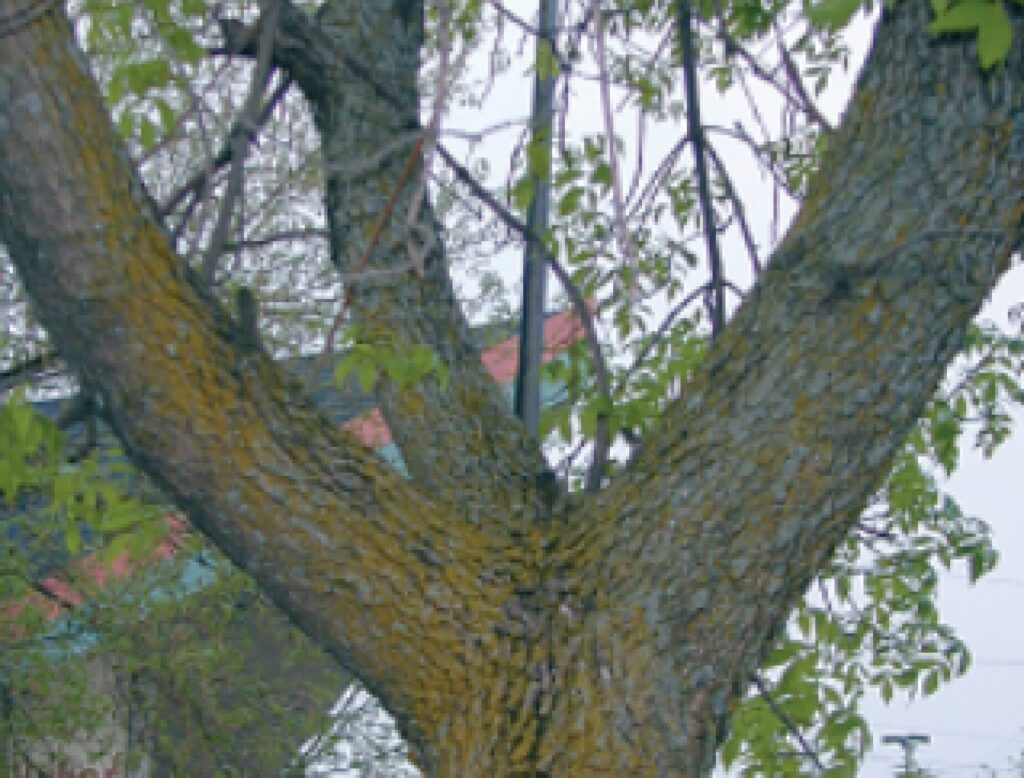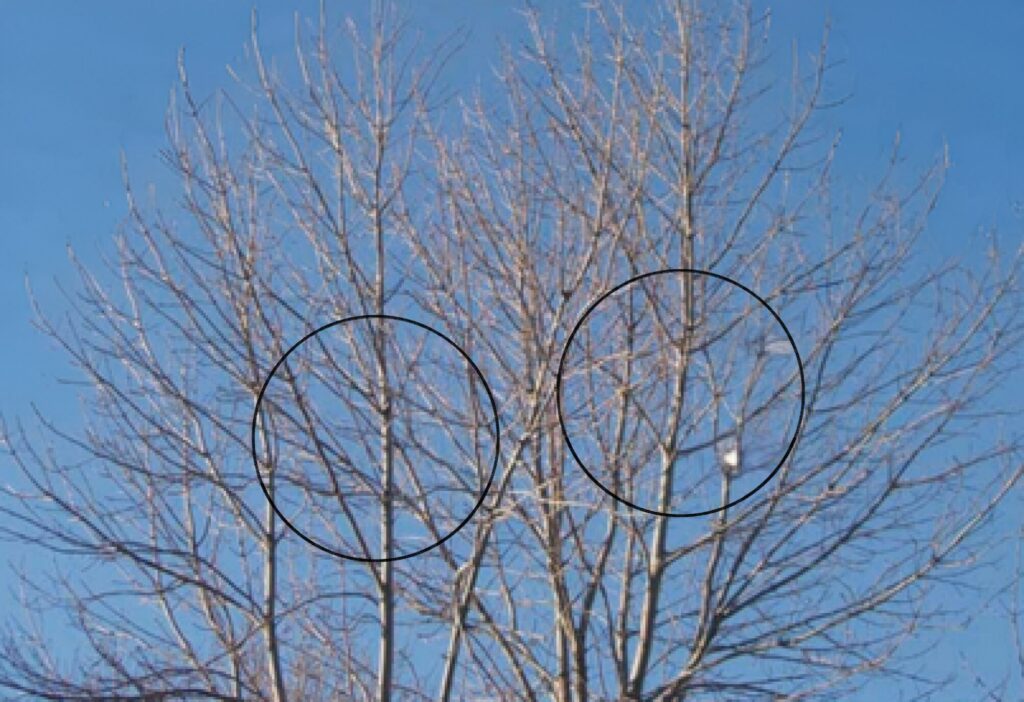All species of ash trees in Edmonton are vulnerable. The most often planted species include: Green (Fraxinus pennsylvanica), White (F. americana), and Black (F. nigra). Only true ash (Fraxinus) species are susceptible which excludes those plants that have ‘ash’ as part of their common name. Mountain ash trees (Sorbus) are not susceptible to attack from EAB.
Leaves
Ash leaves are compound: having their own stalk (petiolule) with multiple tiny leaves (leaflets) attached.
Green Ash, Fraxinus pennsylvanica
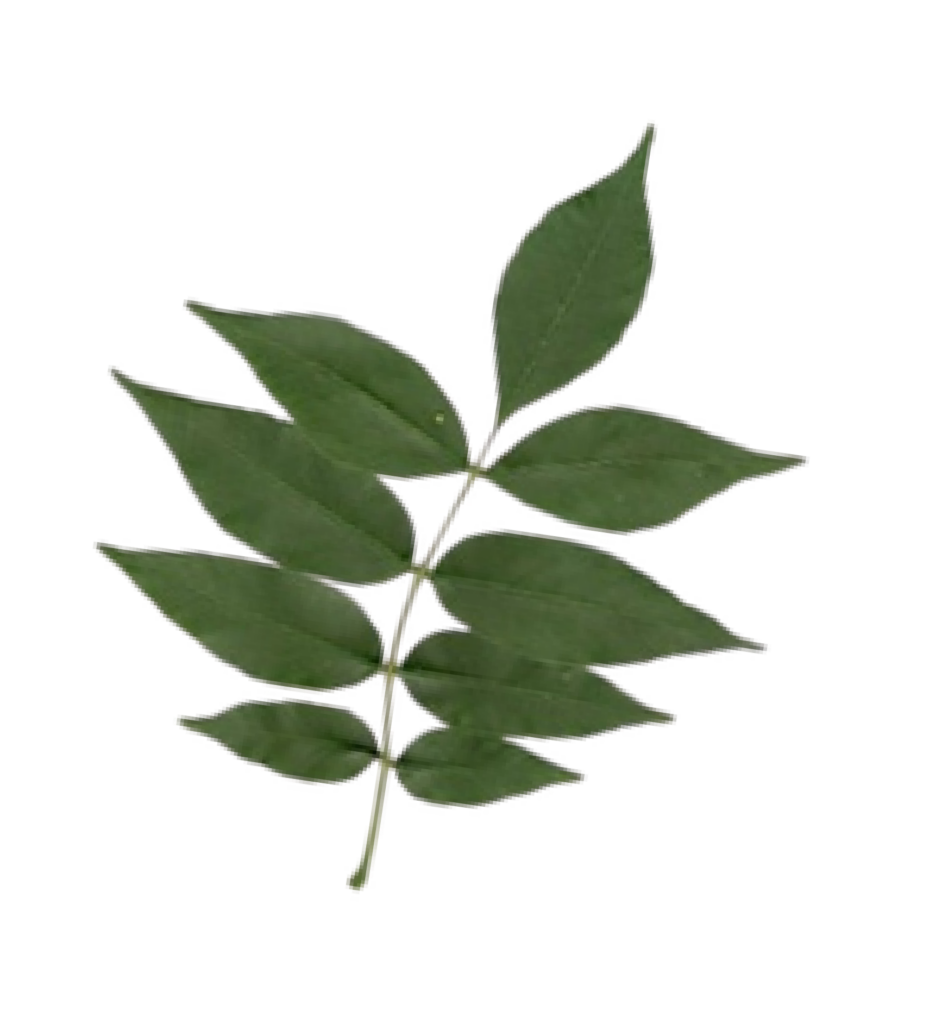
Green Ash, Fraxinus pennsylvanica leaf and stalk are are 15-30 cm long with 7 to 9 leaflets. Leaflet margins are slightly serrated. Leaflets at the base of the stalk are smaller than the others.
White Ash, Fraxinus americana

White Ash, Fraxinus americana leaf and stalk are 15-25 cm long with 5 to 9 smooth or slightly serrated leaf margins.
Black Ash, Fraxinus nigra
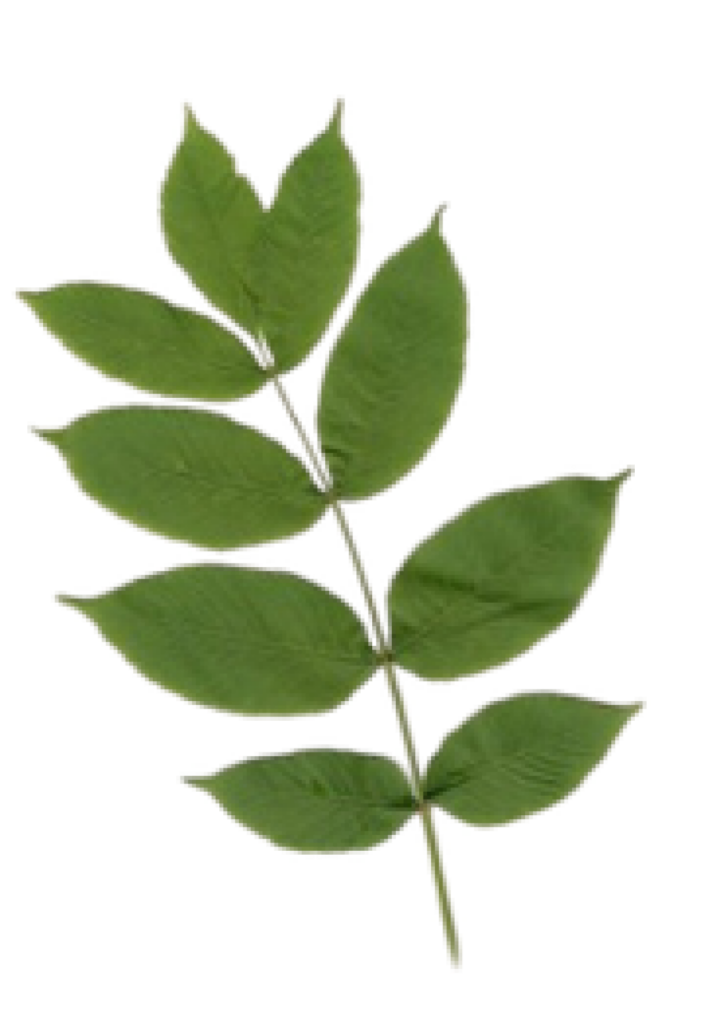
Black Ash, Fraxinus nigra leaf and stalk are are 15-30 cm long with 7 to 11 leaflets. Leaflets have serrated margins. The entire leaf and stalk will drop in Autumn.
Bark
Mature trees have light grey bark. Green and White Ash form deep ridges that intersect and create a diamond pattern. Black Ash is a bit softer to the touch and can be easily rubbed off. The bark on younger trees is smooth.
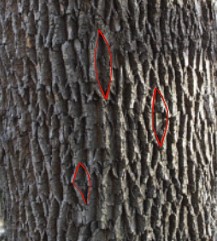

Seeds
Ash tree seeds, known as samaras, grow in hanging clusters. They start out light green when immature and turn light brown as they mature. Each seed resembles a flat canoe paddle in shape.

Branches and Buds
The leaflets, twigs, branches and buds grow in an opposite pattern from each other.
